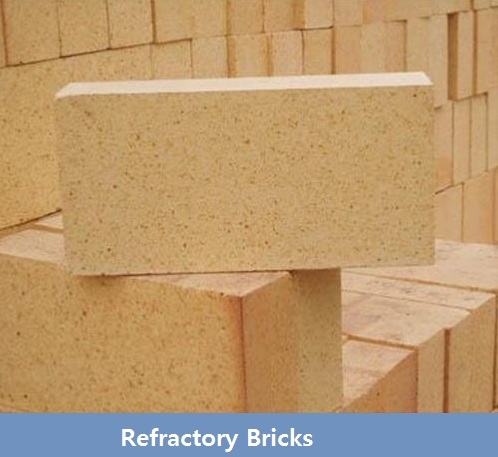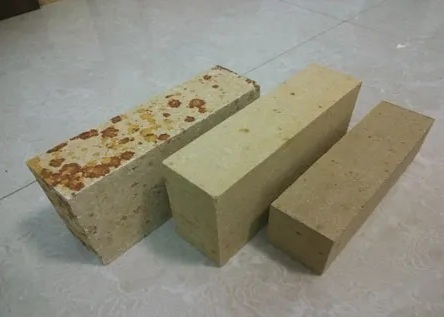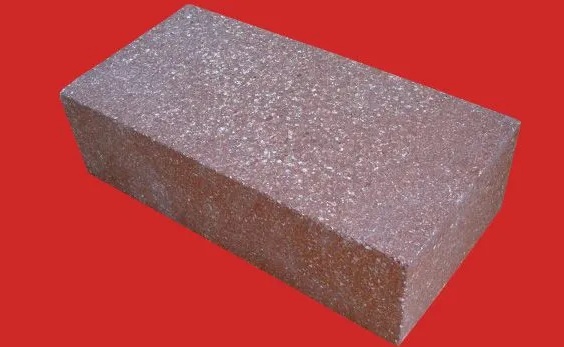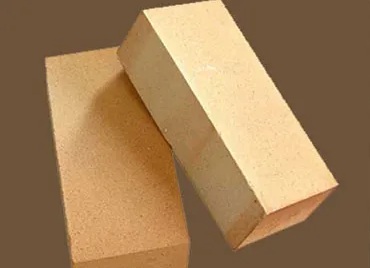Refractory bricks are made of ceramic material. This type of brick can withstand high temperatures. Another name for refractory brick is fire brick. These types of bricks are manufactured by the dry-press, stiff-mud, soft-mud casting, and hot-pressing procedures utilized in the manufacture of building bricks.
Refractory bricks are yellowish-white or white.

A variety of materials, including magnesite and dolomite, must be fired in rotary kilns for sintering and compaction prior to assembling and re-firing crushed and graded materials into refractory molds.
Refractories consist of non-metallic minerals produced in various forms for use at high temperatures, especially in steel mills and structures for the production of glass.
Table of Contents
Types Of Refractory Bricks
1. Acid Fire Bricks
Acidic fire brick also known as acid-resistant brick is used particularly to resist the acidic actions of chemicals or weather.
In general, normal refractory bricks made of natural refractory clay are as good as acid bricks, but if additional acid resistance is required, silica is additionally added to refractory clay, which can be up to 97% of the composition.
For the binding base, you can add 1-2% lime. Acid bricks are fired for a long time at high temperatures.

Types of acid fire bricks:
- Ordinary Refractory Bricks
- Silica Bricks
- Ganister Bricks
Ordinary Refractory Bricks:
Ordinary refractory bricks are made from natural refractory clay mixed with sand and crushed clay. It contains 50% to 75% silica and 20% to 40% alumina and less than 10% flux. It can be used as a good quality acid-resistant furnace lining. It can withstand temperatures up to 1600℃.
Silica Bricks:
This type of brick contains 95% silica. It is made of sandstone or quartzite with 2% to 3% lime added as a binder and flux. It is advantageous for the acid lining of glass furnaces for walls and roofs of main open-hearth steel furnaces and copper smelting furnaces. It can withstand temperatures up to 2000℃.
Ganister Bricks:
Ganister bricks are generated from the siliceous category of Ganister rocks. This rock contains 85% silica and 10% clay, and 2% similar. Brick is very strong, dense, and hard at a high temperature of 2100℃.
2. Basic Refractory Bricks
This brick has advantages in corrosion resistance and chemical resistance. They contain huge amounts of magnesia, and here also lime is used as a binder. A variety of basic refractory bricks are available, including magnesite bricks, magnesia carbon bricks, and magnesia chrome bricks.

Types of Basic Refractory Bricks
- Magnesite Bricks
- Dolomite Bricks
- Bauxite Bricks
Magnesite Bricks:
Magnesite bricks are made of fire clay containing 85% magnesium oxide, 35% iron oxide, and the rest of the lime and alumina. This brick serves as a mandatory lining for furnaces. It can withstand temperatures up to 1800℃ – 2100℃.
Dolomite Bricks:
Dolomite bricks are made of refractory clay with a high content of dolomite. An inexpensive alternative to magnesia bricks in furnace linings. Serpentine is used to increase strength. Withstand temperatures from 1400℃ to 1600℃.
Bauxite Bricks:
Bauxite bricks can be made from fire clay containing 86% bauxite. It can withstand temperatures up to 1600℃.
3. Neutral Refractory Bricks
Suitable for both acid and basic lining purposes. Provides excellent resistance to acid fumes and corrosive attacks. There are two types of neutral bricks: high alumina bricks and chromite bricks.
High alumina bricks contain huge amounts of alumina, whereas chromite bricks contain varying proportions of chromium, iron oxide, silica, bauxite, and iron ore.
They are used to separate linings with acids and bases so that they do not react with each other. Since they are not used for flame retardant purposes, it is not so important.

Types of Neutral Refractory Bricks
- Chromite Bricks
- Carborundum
- Chrome Magnesite Bricks
- Spinal Bricks
- Forsterite Bricks
Chromite Bricks:
Chromite bricks are made of fine silica and refractory clay containing 50% chromium iron ore, 30% iron oxide (iron oxide), and 20% bauxite. It can withstand up to 2000℃.
Carborundum:
Carborundum is a unique variety of natural refractory bricks. It can be made of refractory clay with a high silicon carbide content. Used in electric furnaces. It can withstand up to 1900℃.
Chrome Magnesite Bricks:
Chrome magnesite bricks are made from a mixture of chromium and magnesite.
Spinal Bricks:
Spinal bricks are made by mixing alumina and magnesia in comparable proportions.
Forsterite Bricks:
Forsterite bricks are made from magnesium silicone oxide minerals (2MgO SiO2).
Uses Of Refractory Brick
- Refractory bricks are used for lining the interior floors of furnaces, kilns, chimneys, and other facilities.
- Build fire-resistant structures to reduce structural defects caused by fire.
- The inner lining of the furnace is made of wood.
- As a heat-insulating element of the furnace, the furnace is because of its low thermal conductivity.
